Smart Presence Sensors unlock many new possibilities in smart home automation, energy savings, and security. In this Best Buy Guide, we highlight the best ones that work with Homey.
How mmWave Presence Sensors Work
Presence sensors are quickly becoming the go-to standard for detecting motion and human presence in smart homes. Unlike traditional motion sensors that rely on PIR (Passive Infrared) technology to detect movement, modern presence sensors use mmWave (millimeter wave) technology to reliably detect even static occupancy.
The key difference lies in how they operate. PIR sensors detect changes in infrared radiation, which works well for detecting movement but can miss someone who is sitting still. mmWave sensors, on the other hand, emit high-frequency radio waves and analyze the reflections of these waves. This allows them to detect even the subtlest movements, like breathing or slight shifts in posture, making them far better at identifying presence, not just motion.
Beyond detecting presence, mmWave sensors also enable more advanced features. They can track multiple people in a room simultaneously (multi-target tracking) and define virtual zones within a space, treating each zone as a separate detection area. This provides more precise control and enables smarter automations.
What to Look for in a mmWave Presence Sensor
When choosing a mmWave presence sensor, understanding key features helps you get the most out of your smart home setup. Focusing on the right capabilities makes it easier to pick the device that fits your needs.
Adjustable Sensitivity
Consider a sensor that allows you to adjust its sensitivity, enabling it to be more sensitive for subtle actions, such as breathing, or less sensitive to ignore minor disturbances.
Detection Range and Angle
To cover a whole room, check the sensor’s range and field of view. Some models can detect movement up to 25 meters, while others are most effective at close range.
Multi-Target Tracking
If you need to monitor multiple people simultaneously, confirm that the sensor supports multi-target tracking. This enables more detailed Flows in shared spaces.
Zone Definition
Some sensors let you virtually divide a room into zones, enabling more precise automation. For instance, turning on a reading light when you sit in your favorite chair. If your use case involves distinct areas, this feature can be highly valuable.
Additional Features
Consider additional functionality such as replaceable mmWave modules or built-in sensors for temperature, humidity, or CO₂. These extras can turn a presence sensor into a more complete environmental monitor.
| Brand | Model | Protocol | Range | Angle | Multi-target | Zones | Price |
|---|---|---|---|---|---|---|---|
| FP2 |  Wi-Fi Wi-Fi | 8 meters | 120° |  |  | €83.99 | |
| FP300 |  Thread Thread | 6 meters | 120° |  |  | €49.99 | |
| MSR-2 |  Wi-Fi Wi-Fi | 6 meters | 60° |  |  | €33.18 | |
| MTR-1 |  Wi-Fi Wi-Fi | 6 meters | 60° |  |  | €34.91 | |
| EP One |  Wi-Fi Wi-Fi | 25 meters | 100° |  |  | €66.95 | |
| LWR01 |  Thread Thread | 6 meters | 120° |  |  | €43.90 | |
| MS605 |  Thread Thread | 6 meters | 60° |  |  | €34.99 | |
| SNZB-06P |  Zigbee Zigbee | 4 meters | 100° |  |  | €19.95 | |
| Presence Sensor |  Bluetooth Bluetooth | 8 meters | 120° |  |  | €32.99 |
Aqara FP2
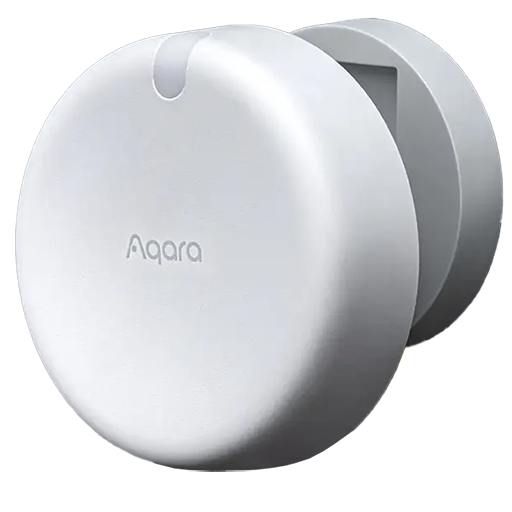
- 60 GHz sensor
- Tracks 5 targets
- 30 detection zones
- Involved setup
The Aqara FP2 is a sophisticated presence sensor from Aqara, a brand well-regarded for its range of reliable smart home devices. It uses a 60 GHz mmWave sensor to provide exceptionally accurate presence detection. This device senses motion as subtle as breathing, ensuring it registers someone’s presence even when they’re completely still.
The FP2’s power lies in its detailed spatial awareness. It can simultaneously track up to five individuals, providing a precise location for each. Beyond just tracking, it also supports fall detection, offering an extra layer of safety without the privacy concerns associated with cameras. The device also includes a built-in light sensor (lux) to allow for more intelligent lighting automation, ensuring lights only activate when it’s actually dark.
Its standout feature is undoubtedly the ability to define up to 30 distinct detection zones within a single room. You can map out your room and create specific zones for your sofa, desk, bed, or kitchen counter. This granular control transforms a single sensor into an automation powerhouse, allowing you to trigger different actions based on which specific area of the room is occupied.
The Aqara FP2 integrates in Homey through the HomeKit Controller app. After defining zones in the native Aqara app, Homey recognizes each one as an individual motion sensor. This means you can build specific Flows for each area and trigger Advanced Flows. It’s worth noting that the setup process is much more involved than just pairing a device to Homey.
Aqara FP300 Presence Multi-sensor
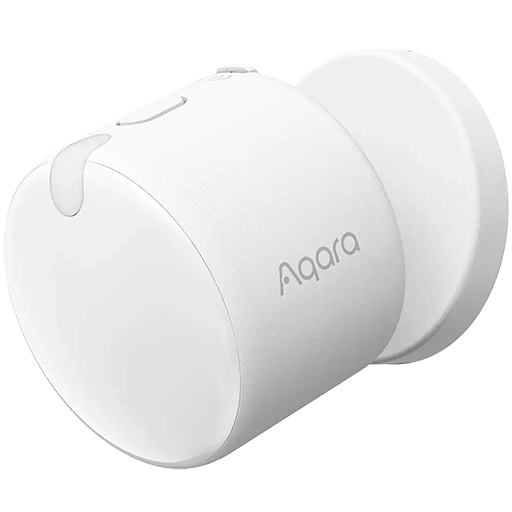
- Dual protocol
- Multi-sensor
- Great battery life
- Combines PIR and mmWave sensors
- Features limited by protocol
The new Aqara FP300 Presence Sensor combines a 60GHz millimeter-wave (mmWave) radar with a standard Passive Infrared (PIR) sensor to detect human occupancy. Beyond presence detection, this device functions as a 5-in-1 multi-sensor, eliminating the need for separate environmental monitors in the room. It includes built-in sensors for illuminance (light level), temperature, and humidity. All values are exposed to Homey, allowing you to trigger complex automations from a single device.
Just like most next-gen Aqara devices, the FP300 is a dual protocol device with Zigbee and Matter-over-Thread support. Homey Pro users can connect the FP300 directly via Thread, operating as an end device in the mesh network without the need for a proprietary hub. Alternatively, it can be paired via Zigbee to Homey Pro and Homey Bridge and used in automation flows. Some features, like advanced AI learning, require a proprietary Aqara hub and using the device exclusively over Zigbee.
Power is supplied by two CR2450 coin cell batteries, a distinct choice from the AA or AAA batteries found in similar devices. Aqara states that battery life varies significantly depending on the protocol used: up to three years is expected when using Zigbee, whereas operation via Matter over Thread reduces this estimate to approximately two years. The device achieves this efficiency by using the PIR sensor to wake the radar only when initial movement is detected, rather than keeping the mmWave radio active continuously.
Apollo Automation MSR-2
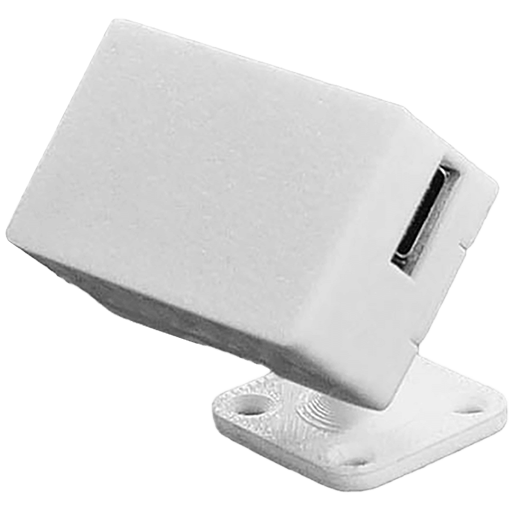
- Small and compact
- Accurate and reliable
- Many extra sensors
The Apollo MSR-2 is a high-precision mmWave radar multi-sensor from Apollo Automation, a company that specializes in advanced sensor technology. The MSR-2 is exceptionally reliable in detecting the presence of a single target. Its 24GHz mmWave radar is highly responsive to micro-movements, providing a rock-solid foundation for presence-based Flows.
What sets the MSR-2 apart from many competitors is its wealth of integrated environmental sensors. Besides presence, it includes a temperature sensor, a humidity sensor, an air pressure sensor, and a light sensor (measuring lux). Optionally, you can attach a CO₂ sensor and obtain Carbon Dioxide readings from the same device. This multi-sensor capability makes it an incredibly efficient data-gathering tool for any smart room.
The radar provides more than just an indication of whether a space is occupied or unoccupied. It can measure the precise distance to a detected target as well as the speed of its movement. Leveraging this capability, you can define linear zones in Flows based on the distance from the sensor (for example, a ‘desk zone’ from 0 to 1 meters, and a ‘room zone’ from 1 to 4 meters).
Once integrated in Homey via the official Apollo Automation app, you can create powerful automations. For example, you can program a reading lamp to turn on only when the sensor detects you are sitting still within two meters of it, but have the main room lights activate if it detects you elsewhere in the room.
Apollo Automation MTR-1
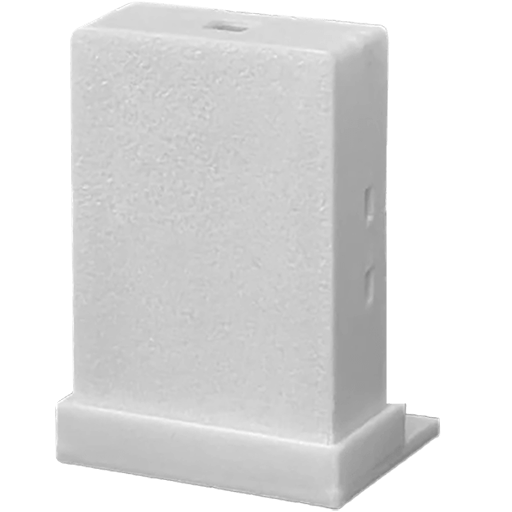
- Multi-target radar
- 3 detection zones
- Many extra sensors
- Limited static range (few meters)
The Apollo MTR-1 is another advanced multi-sensor from Apollo Automation. Built upon the foundation of the MSR-2, it adds multi-target tracking and 3D zoning capabilities to your smart home. Aimed at users who want to understand not just if a room is occupied, but also who is in it, the MTR-1 brings a level of intelligence typically found in much more expensive commercial systems.
The MTR-1 utilizes its 24 GHz mmWave radar to simultaneously track the positions of up to three people. It allows you to configure up to three distinct 3D zones within its field of view. This means you can create a “couch zone,” a “dining table zone,” and a “TV zone” all within one open-plan living area. In addition to its powerful presence capabilities, the MTR-1 also comes packed with the same suite of environmental sensors as the MSR-2, measuring temperature, humidity, and ambient light levels.
The key feature of the MTR-1 is its potent combination of multi-target tracking and environmental sensing in a single, compact package. This makes it an incredibly efficient all-in-one sensor for core room automation. It not only provides the triggers for presence-based lighting and climate control but also offers the data needed to make those automations smarter and more responsive to the actual conditions and usage of the space.
Integration with Homey is seamless through the Apollo Automation app. Each of the three configurable zones appears in Homey as a separate motion sensor. The target coordinates, distance, speed, and total number of people in each zone are also available as a distinct capability. It’s important to note, however, that the MTR-1’s technology is optimized for tracking moving targets. As a tradeoff, its ability to detect a completely stationary person, like someone reading a book, is most reliable within the first few meters and becomes less effective as the distance from the sensor increases.
Everything Presence ONE
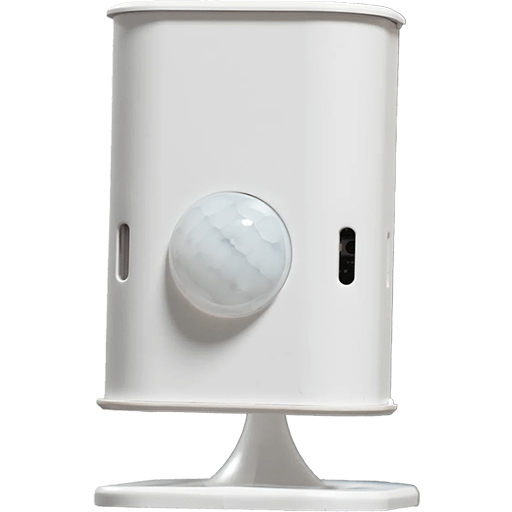
- Fast and reliable
- Detection range of 25 meters
- Combines PIR and mmWave Sensors
- Pricy
The Everything Presence ONE is a versatile and highly effective combo presence sensor. It originated as a community project and has evolved into a polished commercial product. It’s designed around a core philosophy of reliability and is powered by USB-C, connecting to your network via Wi-Fi and running on the popular and flexible ESPHome firmware.
This sensor achieves its exceptional performance by combining two different technologies. A Passive Infrared sensor provides lightning-fast initial detection the moment someone walks into a room. Immediately after, a sensitive 24 GHz mmWave radar sensor takes over to maintain the “occupied” state, ensuring detection continues even if you’re not moving. The device also includes on-board temperature, humidity, and light sensors (measuring lux).
The standout feature of the Everything Presence ONE is this hybrid sensing approach. This “best of both worlds” strategy provides instantaneous triggers when you enter a space and reliable static detection while you are there. Furthermore, the latest version of the EP ONE features an mmWave radar with a detection distance of 25 meters.
Once integrated in Homey, the Everything Presence ONE exposes the PIR sensor, the mmWave sensor, and a unified presence state as three separate capabilities, giving you ultimate flexibility in how you build your Flows. Additionally, the temperature, humidity, and luminance values are available to be used as triggers or conditions. It’s worth noting that the Everything Presence ONE is pricier compared to similar devices, like the Apollo Automation MSR-2.
Lafaer LWR01
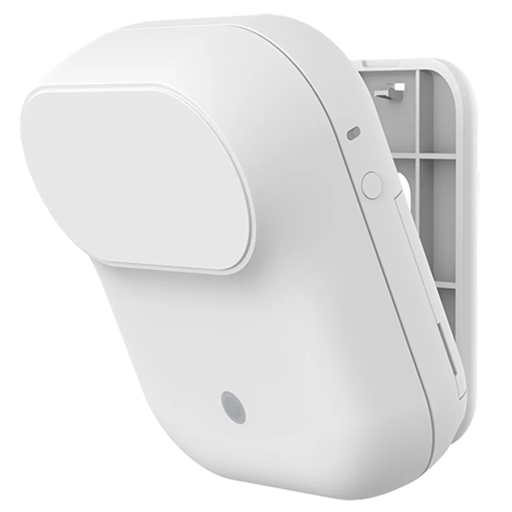
- Matter over Thread
- AA or USB-C
- 60GHz mmWave
- Requires app for distance setting
The Lafaer LWR01 is a new Matter-certified presence sensor with Thread connectivity. It uses a 60 GHz mmWave radar for precise detection, sensing motion up to 6 m and presence up to 3.5 m. This allows lights and automations to stay active even when you are sitting still.
The sensor also includes an ambient light sensor that measures the surrounding light level, which can be used in Homey Pro automations to control lights only when the room is dark. The LWR01 can run on two AA batteries or be powered by USB-C, making installation simple and flexible for bedrooms, offices, hallways, or bathrooms.
Furthermore, the LWR01 is IPX3 spray-proof, which makes it ideal for humid or damp environments such as bathrooms or kitchens. Its discreet size and clean design allow it to blend easily into any interior while maintaining stable detection without false triggers.
In daily use, it reacts instantly when someone enters or leaves a room and continues to detect subtle movements like reading or typing. The combination of mmWave sensing and Thread connectivity ensures smooth performance, low latency, and energy-efficient communication across your smart-home network.
When paired with Homey Pro or Homey Pro Mini over Thread, the LWR01 appears as a standard occupancy sensor and can be used to trigger automation flows. However, to fine-tune its detection range, you need to use the Lafaer mobile app.
Meross MS605
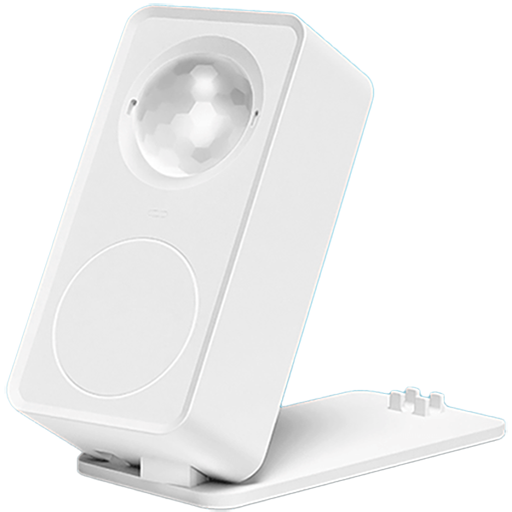
- Affordable
- Fast initial detection
- Combines PIR and mmWave Sensors
- Some settings require Meross app
The MS605 is a hybrid presence sensor designed by Meross which can be used for indoor and outdoor presence detection. This battery-powered Thread sensor offers a clean setup process over Matter, once initialized and calibrated. Thanks to the low-power Nordic chip, it can operate up to 3 years on a single battery.
For maximum presence detection effectiveness, the MS605 relies on its dual-sensor setup. A PIR sensor ensures an instant response the moment you enter a space. Immediately after, a microwave radar sensor takes over and provides accurate detection for stationary targets. This combination ensures automations trigger quickly and lights don’t turn off unexpectedly.
The Meross MS605 connects to Homey Pro over Matter via Thread. Once added, it exposes primary capabilities like motion and luminance, with the added benefit of zone detection. The main motion sensor is a combination of both the PIR and mmWave sensors, which means both need to clear before the MS605 changes state. This allows you to create simple yet powerful automations, such as turning lights on only when the space is both occupied and dark.
Sonoff SNZB-06P
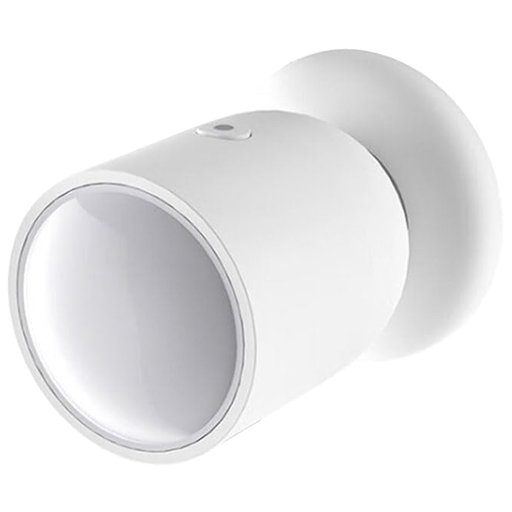
- Affordable
- Small and compact
- Zigbee router
- Prone to false triggers
If you’re looking for a compact, affordable, and straightforward solution, the Sonoff SNZB-06P is an excellent choice. Manufactured by Sonoff, a brand popular within the smart home community, this sensor uses the Zigbee 3.0 protocol instead of Wi-Fi.
The SNZB-06P relies on a 5.8 GHz microwave radar to detect human presence. This technology excels at sensing subtle motions, ensuring that automations remain active even when there is no noticeable movement. It’s a no-frills device, meaning it can’t create detection zones or track multiple people.
Its most compelling feature is its combination of the Zigbee protocol with its small, unobtrusive form factor. The use of Zigbee enables it to be more responsive and reliable in homes with congested Wi-Fi networks, and it can also serve as a Zigbee router to strengthen your overall mesh network. Its magnetic mounting base allows for proper installation and adjustment in your space.
The Sonoff SNZB-06P presence sensor is compatible with Homey Bridge, Homey Pro, and Homey Pro mini. Once paired via Zigbee, it exposes a simple motion sensor along with an illuminance level sensor. Unlike others in this list, the SNZB-06P uses 5.8 GHz radar instead of 24 GHz, which is more prone to false triggers.
SwitchBot Presence Sensor

- 3-in-1 sensor
- 2-year battery life
- AI interference filtering
- Requires hub
If you are looking for accurate presence detection without the hassle of running cables, the new SwitchBot Presence Sensor is a game-changer. Unlike power-hungry 60GHz sensors that require a wired connection, this model uses a more energy-efficient 24GHz mmWave radar combined with a PIR sensor, allowing it to run on two standard AAA batteries for up to two years.
This dual-sensor approach ensures rapid motion detection via PIR while the mmWave radar detects static presence—keeping your lights on even when you are sitting still reading or working. It offers a 120° field of view with a range of up to 8 meters for movement and 5 meters for static detection. A detachable magnetic base allows you to angle the sensor perfectly to cover your specific area.
To integrate this sensor with Homey, you will need a SwitchBot Hub (like the Hub 2 or Hub Mini). Once connected, it exposes presence and illuminance data to Homey via the cloud or Matter (with a compatible hub), allowing you to create robust automations. It's unique "AI self-learning" helps it filter out interference from fans or air conditioners, reducing false triggers significantly.







